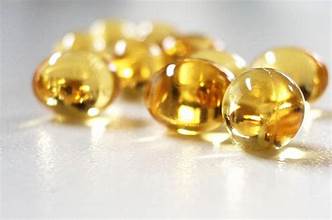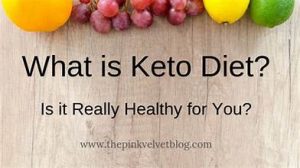Fat-soluble vitamins are more likely to cause adverse effects if consumed in large doses. Here’s what the experts say about vitamin A and E
There are many important supplements that benefit people with specific deficiencies or certain health conditions; but research shows, and experts say, that some synthetic vitamins might do more harm than good.
“Everyone is always searching for that magic pill that will give them great health, but dietary supplements just aren’t it because the benefits often don’t outweigh the risks,” says JoAnn Manson, chief of preventive medicine at Brigham and Women’s Hospital in Boston, Massachusetts.
That’s not to say that some groups of people don’t need to supplement certain nutrients at certain points in their life; only that most people don’t need to supplement all the vitamins they may think they do.
“Generally, I don’t suggest the use of vitamin supplements unless there is a specific reason to do so,” says Walter Willett, a professor of epidemiology and nutrition at Harvard T. H. Chan School of Public Health.
Such advice is especially pertinent to fat-soluble vitamins.
Water soluble vs. fat soluble
Water-soluble and fat-soluble nutrients are absorbed differently in the body.
Water-soluble vitamins, which include vitamin C and all eight B vitamins, are dissolved, processed, and metabolized quickly in the body, and are not stored for later use.
“Excess amounts of water-soluble vitamins are excreted in the urine,” explains Alice Lichtenstein, director of the cardiovascular nutrition team at the Jean Mayer USDA Human Nutrition Research Center on Aging at Tufts University.
On the other hand, fat-soluble nutrients—vitamins A, D, E, and K—are stored in the liver and adipose (fatty) tissue throughout the body for future use. While that helps to stockpile vitamin D during the summer sunshine to compensate for less sunlight exposure during winter months, it also means these vitamins can accumulate to potentially toxic levels.
It’s for that reason that Tolerable Upper Intake Level (UL) safety guidelines are provided by the National Academies of Sciences, Engineering, and Medicine to show the maximum quantity of certain vitamins that can be safely consumed without adverse health effects.
“Fat-soluble vitamins tend to have lower ULs compared to water-soluble vitamins, emphasizing the need for caution when consuming them,” explains Jen Messer, a registered dietitian and president elect of the New Hampshire Academy of Nutrition and Dietetics.
Among the four fat soluble vitamins, the experts say vitamins A and E require more caution than others.
Concerns over vitamin A
Vitamin A is important for vision, growth, reproduction, and immune health. When consumed through natural food sources such as beef liver, sweet potatoes, spinach, carrots, or pumpkin pie within recommended doses— 900 micrograms daily for adult men and 700 micrograms daily for adult women—vitamin A is considered safe and essential.
The maximum daily upper intake limit for vitamin A is set at 3,000 micrograms, though it’s important to note that such allowances include consumption or absorption of all sources of vitamin A including from foods, supplements, and creams/lotions that contain retinol. (For context, consider that a single 3-ounce serving of pan-fried beef liver contains 6,582 micrograms of the vitamin.)
Exceeding the UL is dangerous and “one single large dose of it can contribute to toxicity,” explains Yufang Lin, a primary care physician at Cleveland Clinic’s Center for Integrative Medicine. Such toxicity can cause issues like joint pain, liver damage, and birth defects.
“Vitamin A is essential for normal fetal development, but too much of it can cause harm to both the mother and the developing fetus, causing an increased risk of birth defects of the eyes, heart, organs, and central nervous system,” says Messer.
Even in modest amounts and outside of pregnancy, “vitamin A supplements have been linked to skin irritation and an increased risk of bone fractures,” says Manson.
Research published earlier this year shows that vitamin A toxicity can also result from topical vitamin A (retinol) which is used to treat acne and psoriasis.
There have even been issues with vitamin A’s inclusion in multivitamins. “At one point, there was concern about the amount of vitamin A in multivitamin supplements and bone loss in older women,” explains Lichtenstein. She says it’s for this reason that some multivitamin brands now only include vitamin A as an ingredient in the form of beta-carotene. (Studies show that beta-carotene is converted into vitamin A in the body but carries less of the risks associated with other forms.)
What’s more, though some studies show that vitamin A derived from a balanced diet might reduce the risk of certain cancers; the NIH Office of Dietary Supplements notes that its supplement form might increase the risk of certain cancers because of vitamin A’s role in regulating cell growth and differentiation.
“Longer-term, high-dose intake of vitamin A may also lead to liver disease, elevated blood lipids, bone and muscle pain and visual issues,” says Kate Zeratsky, a registered dietitian nutritionist at Mayo Clinic in Rochester, MN. “Early signs of vitamin A toxicity may include dry skin, nausea, headache, fatigue, large liver, and hair loss, among other possible symptoms.”
Concerns over vitamin E
Vitamin E is an even more controversial fat-soluble supplement.
When it occurs naturally in foods like wheat germ oil, avocado, fish, seeds, and nuts like almonds, hazelnuts, and peanuts, vitamin E is a powerful antioxidant that protects one’s cells from the effects of free radicals and improves skin and eye health.
But Harvard T. H. Chan School of Public Health’s Department of Nutrition notes that the safety profile of its synthetic form is a matter of debate among academics: “Due to occasional reports of negative health effects of vitamin E supplements, scientists have debated whether these supplements could be harmful and even increase the risk of death.”
One of the points of controversy and confusion regarding vitamin E is the fact that the nutrient has multiple forms‑some of which are more studied than others.
“Vitamin E has eight chemical forms naturally, whereas most of the vitamin E supplements are synthetic alpha-tocopherol,” explains Lin. It’s this alpha-tocopherol form that seems to carry more risks than other forms of vitamin E. “This is an argument that it is better to eat foods that are rich in vitamin E rather than taking a synthetic supplement.”
Zeratsky agrees. “I believe there is a need to better understand how the different forms of vitamin E act and interact in our bodies,” she says.
There’s also some confusion with how much vitamin E one can safely consume. The daily recommended dietary allowance (RDA) of vitamin E is 15 milligrams for both adult men and adult women, but its daily upper intake limit is 1,000 milligrams. The NIH Office of Dietary Supplements notes that “taking vitamin E supplements even below these upper limits might cause harm.”
Indeed, clinical research shows that taking just 268 milligrams of vitamin E daily can increase the risk of prostate cancer in men by 17 percent. The form used in supplements has also been linked to lung cancer.
“And you don’t have to reach toxic levels to experience downsides,” adds Manson. “The randomized trials of vitamin E have documented issues even in moderate amounts.”
Higher doses of vitamin E supplementation may also interfere with blood clotting, which may cause hemorrhages, says Jessika Rose, a bariatric dietitian for the University of Maryland Upper Chesapeake Health.
Because of these issues and others, research published by the American Heart Association shows that supplemental vitamin E is no longer recommended at the higher levels needed to help protect against chronic disease like cancer, arthritis and cataracts.
“Ultimately, it is about evaluating the balance between potential risks and rewards,” Messer explains.
Lack of regulation for dietary supplements
Another area of concern for the experts that effects both water- and fat-soluble vitamins is that supplemental nutrients aren’t regulated by the U.S. Food and Drug Administration (FDA) using the same criteria as foods and drugs.
This can lead to unfounded claims and even labels that misrepresent the ingredients within each supplement bottle. “According to a recent independent analysis of 57 dietary supplements, 84 percent of them did not contain the amount of ingredients claimed, while 40 percent of the supplements did not contain any of the ingredients claimed,” says Messer. “Moreover, 12 percent of the supplements contained undeclared ingredients, which is prohibited by the FDA.”
It falls upon consumers, then, to choose reputable supplement brands and to purchase products that have been tested and marked by established third parties. “And be very wary of any supplement that claims it can treat a disease since supplements are not allowed to make such claims,” says Lin.
It’s also important to check the daily dosage recommendations and upper limits of dietary supplements and to make sure that one supplement you’re taking won’t interfere with another. “Talk to your doctor or dietitian to help determine the specific nutrients that you need,” suggests Rose.
“It is a common misconception that vitamin supplements are beneficial for everyone,” says Messer. “They can be beneficial for certain individuals in particular situations, but are not universally necessary, can be expensive, and are not entirely risk-free.”



